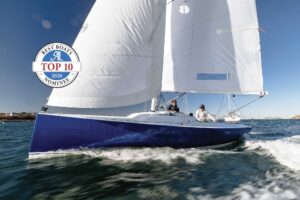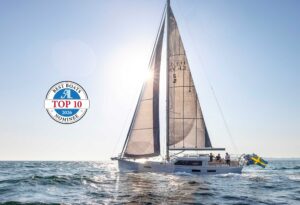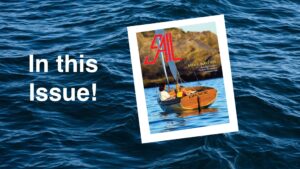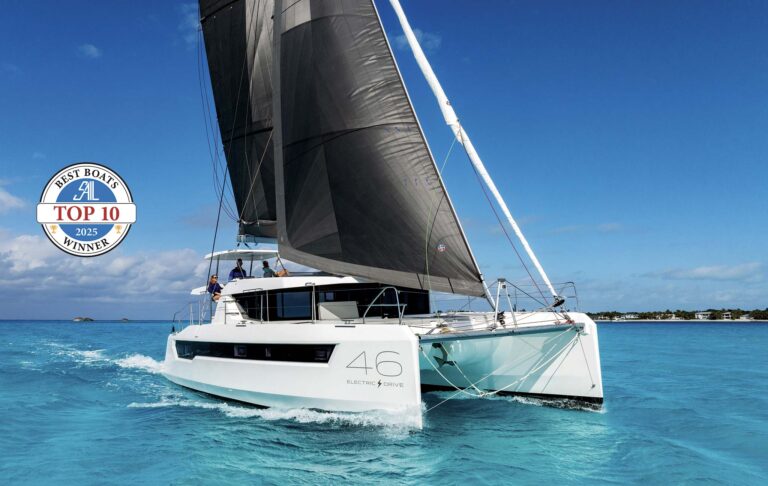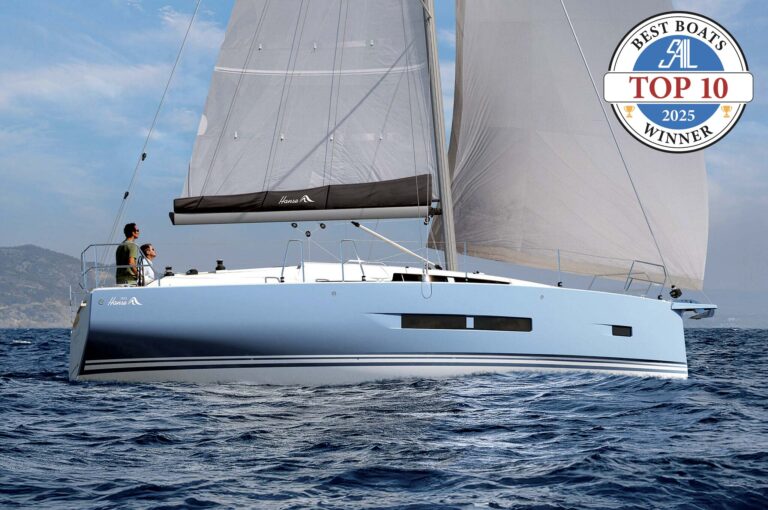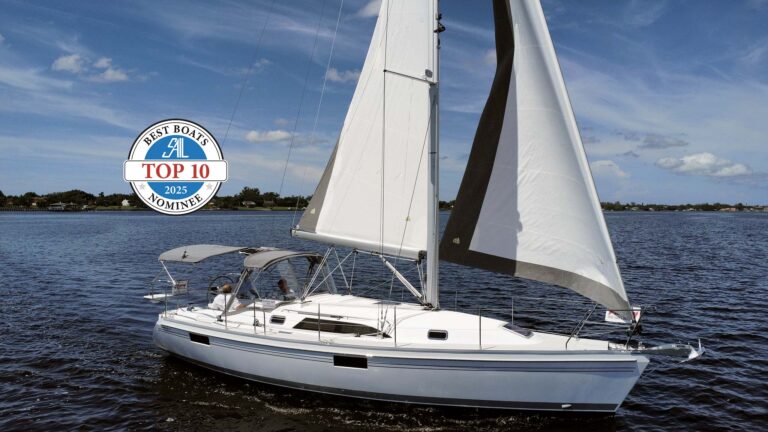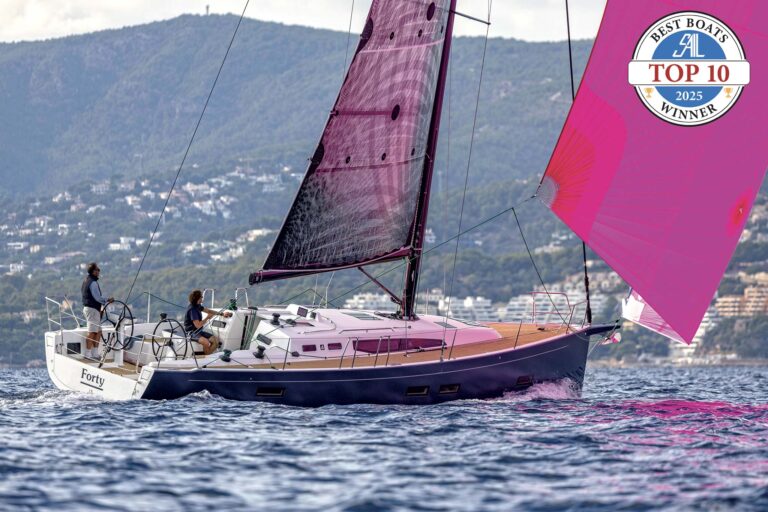The sound of water rushing past the foils and propellers took on a note of urgency as Gemini’s Robin Hodges cranked in the genoa and pointed the Gemini Legacy 35 higher into the 10-knot breeze. A large, aggressive-looking production monohull was coming up fast from leeward and few cat sailors can resist such a challenge. For perhaps half a mile we held off the 50-footer, neither gaining nor losing ground and pointing as high, the knotmeter flickering around 8 knots, before gybing to run back toward Annapolis. And no, I can’t swear to the calibration, but if it was exaggerating, it wasn’t by much.

The Gemini catamaran has been one of the quiet achievers of American boatbuilding, selling solidly through various incarnations that always showcased the twin attractions of affordability and versatility. The latest of these is the Legacy 35, which embodies the most significant changes in the 33-year history of Gemini catamarans. The design team at Marlow Hunter in Florida—where Geminis are now built—has reinvented the boat in order to capture a new audience. Consulting with the boat’s original designer/builder Tony Smith, they’ve put a new spin on a venerable classic.
Where the 105MC reveled in its quirkiness, the Legacy 35 has shifted into the production cat mainstream. Gone is the 105MC’s centrally mounted Westerbeke diesel and swiveling love-it-or-hate-it Sillette drive leg, in favor of a brace of 15hp Yanmars. The diamond-stayed rig is all-new and so is the square-topped mainsail. Halyards and reefing lines are now led aft to the cockpit, and the optional Code 0 is set on a retractable sprit. The pivoting centerboards that allowed the 105MC to float in just over 18 inches of water have been replaced by a pair of fixed keels that increase draft to 2ft 10in; the trade-off is improved protection for the hull when drying out.
Warren Luhrs himself took charge of the cockpit design, which is more open than on the 105MC and, thanks to the lack of backstay and the mainsheet traveller being moved to the hardtop, less cluttered.
There’s a greater sense of space in the saloon, and for the first time on a Gemini there is a choice of layouts—the port hull is devoted to the owner, with a generous berth forward and heads/shower aft, and the starboard hull can either have cabins fore and aft or an aft cabin/forward heads layout. The forward cabin would be a snug fit for two, but the dinette table also converts to a double.

Anyone who has sailed an older Gemini will be instantly familiar with the feel of the Legacy 35. The fixed keels don’t seem to have affected performance much, if at all. As the breeze built the 35 bustled along purposefully, towing an impressive pair of wakes but going fast and heeling just enough to let you know you’re sailing. There was good feedback from the helm, and the boat carried its way when we tacked, pointing well but feeling happiest at around 40 degrees to the apparent wind. Sight lines from the helm were fine, and the sheets were easy to work. All in all, this is an enjoyable little cat.
The twin diesels will win more friends than the Sillette drive, but should you wax nostalgic for the latter, Gemini will happily build you a new 105MC. The more refined nature of the Legacy 35, however, will sway most of those in the market for a compact coastal cruising cat; the fact that its 14-foot lets it slide into a monohull slip is as strong a selling point as it ever was.


